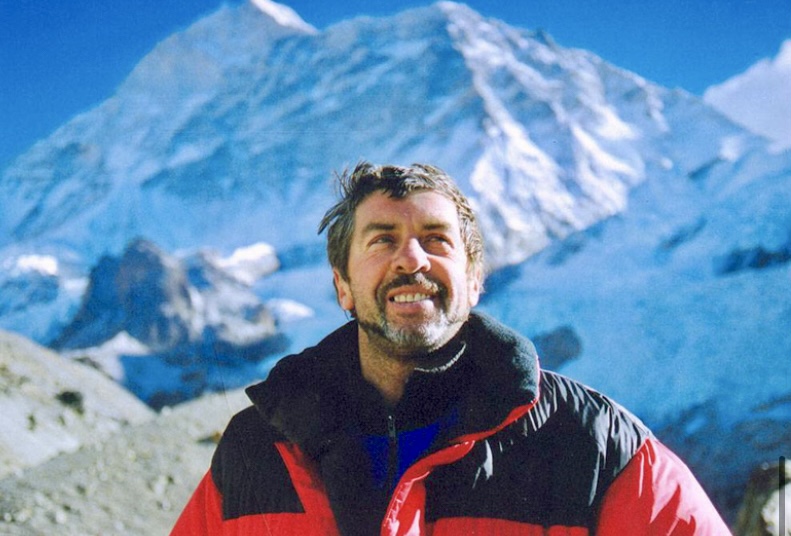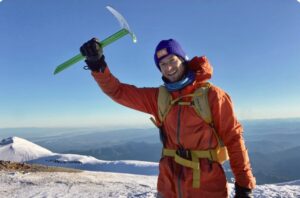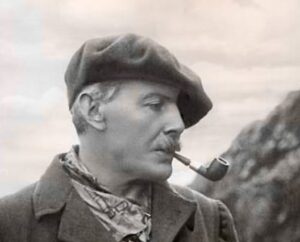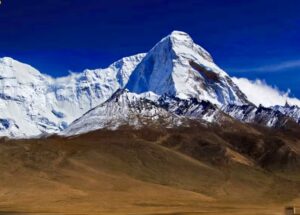In the 1980s, Vladislav Oleksandrovych Terzyul of Ukraine emerged as one of the strongest climbers of his generation. During his career, Terzyul climbed all 14 8,000m peaks, although he only reached secondary summits on Shisha Pangma and Broad Peak.
His life ended tragically on Makalu in 2004. We trace his journey, from his early climbs to his final expedition.
Terzyul was born in Artyom, Russia, on June 18, 1953, and later moved to Odessa, Ukraine, where he settled in the coastal city of Yuzhny. As a young man in the 1970s, he began climbing in the Caucasus Mountains. He summited 5,642m Mount Elbrus, Europe’s highest peak, and tackled technical routes on ice and rock, often in harsh winter conditions.
In the 1980s, Terzyul expanded his experience in the Pamir Mountains of Tajikistan. He also climbed in the Tien Shan and Altai ranges, mastering mixed routes of ice, snow, and rock. His daily routine in Yuzhny included jogging 4.5km and swimming in the Black Sea, keeping him physically ready for the mountains.
By the late 1980s, Terzyul was a leading figure in the Odessa Alpine Club and earned the Soviet title of Master of Sport in alpinism. He summited all the 7,000’ers in the former USSR and won the prestigious Snow Leopard award.
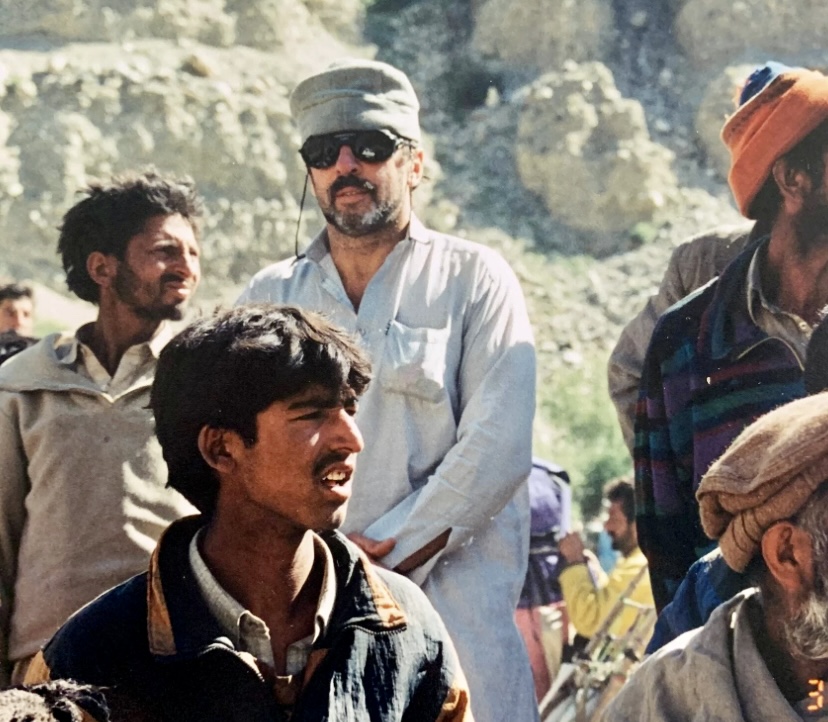
Vladislav Terzyul with locals in Pakistan. Photo: Righttimestudios.com
Quest for the 14
Terzyul’s pursuit of the 14 8,000’ers was motivated by Reinhold Messner’s successes. He was convinced that a Ukrainian could summit the 14 peaks without supplemental oxygen. The quest defined his career.
From 1993 to 2003, he summited nine 8,000m peaks, all without supplemental oxygen except Kangchenjunga, his first 8,000’er. He also reached the Central Summit of Shisha Pangma (and skied down from 7,400m, according to RussianClimb) and made it to the foresummit of Broad Peak.
Among his many climbs, a couple stand out. Terzyul was a member of the 1996 Polish International Expedition to Annapurna I that established a new route on the Northwest Ridge. In 2000, he made a successful solo push to Cho Oyu’s summit and skied down to Camp 2. He then helped a sick climber descend from Advanced Base Camp to Base Camp.
In 2001, Terzyul joined the Ukrainian National Expedition to Manaslu, reaching the summit via a new route on the Southeast Ridge. Before the 2004 Makalu expedition, his last summit was Gasherbrum I in 2003.
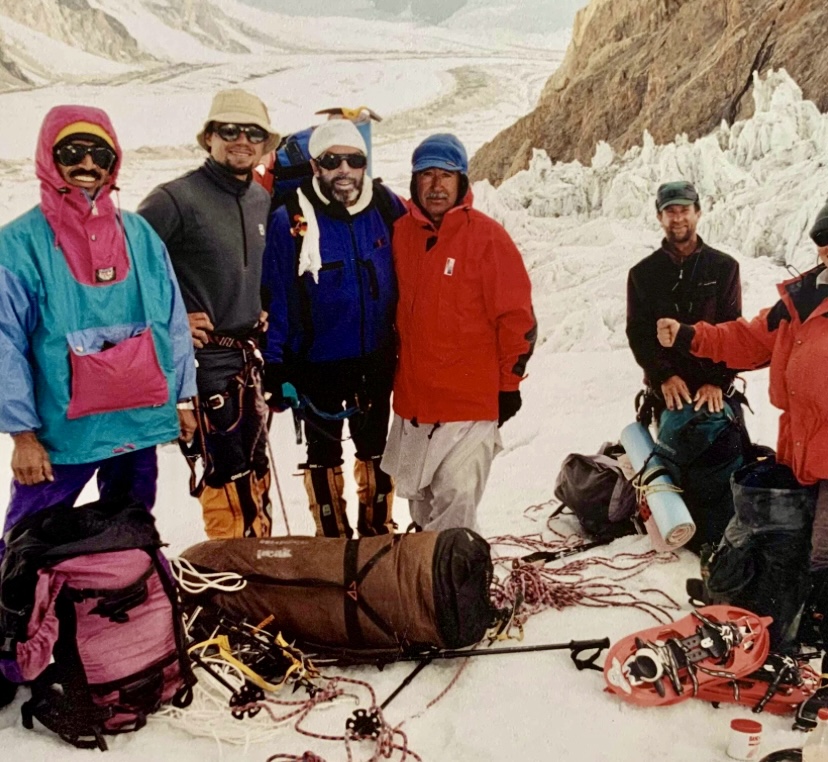
The 2003 Gasherbrum I expedition. Photo: Righttimestudios.com
Makalu, 2004
In the spring of 2004, eight expeditions targeted 8,485m Makalu. Four teams climbed via the Makalu La-Northwest Ridge route (one of them with a variation), while two parties used the Southeast Ridge. Soloist Jean-Christophe Lafaille chose the Northwest Ridge-North Face of the Kangchungtse–Makalu La-Northwest Ridge route, and the Kazakhstan Makalu Expedition, led by Maxut Zhumayev, targeted the difficult West Pillar without bottled oxygen. The Kazakh team included nine climbers: Zhumayev, Sergey Brodsky, Ervand Iljinsky, Damir Molgachev, Vassily Pivtsov, Artyom Rychkov, and Alexander Rudakov, from Kazakhstan; Jay Sieger from the U.S., and Terzyul from Ukraine.
Makalu’s West Pillar is wild, complicated, and dangerous. It is a very exposed route, especially in Makalu’s frequent strong winds. French climbers Bernard Mellet and Yannick Seigneur made the first ascent of the West Pillar on May 23, 1971, using oxygen, as members of a team led by Robert Paragot.
In 1980, John Roskelley made the West Pillar’s second ascent and its first without O2. Only three other expeditions climbed the West Pillar before 2004.
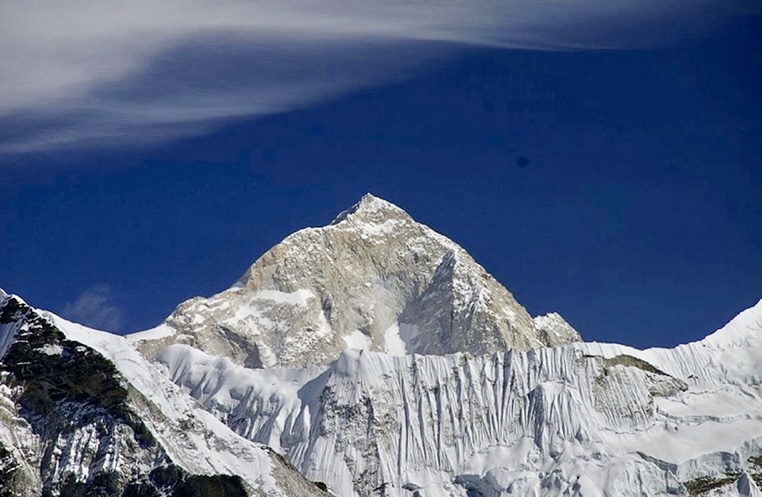
Makalu from the west. Photo: Ben Tubby
The expedition begins
On April 9, 2004, Zhumayev’s team left for Nepal. They flew to Lukla on April 14, reaching Base Camp by helicopter on April 16, just above the junction of the Barun and Chago Glaciers.
Camps sprang up quickly: Camp 1 was established by April 22 (below 5,180m), Camp 2 by April 23 at the West Pillar’s base, Camp 3 by May 6 at 7,400m on the West Pillar, and Camp 4 by May 13 at 7,700m-7,800m, according to The Himalayan Database.
The first summit attempt took place from May 12 to 14, when Molgachev, Brodsky, and Rychkov climbed from Camp 4. However, strong winds and exhaustion forced them to turn back before the summit, and they retreated to Base Camp.
On May 15, the same trio tried again, leaving Camp 4 at 6 am and reaching 8,300m by 4:30 pm. But high winds and the late hour prompted another retreat to Camp 4.
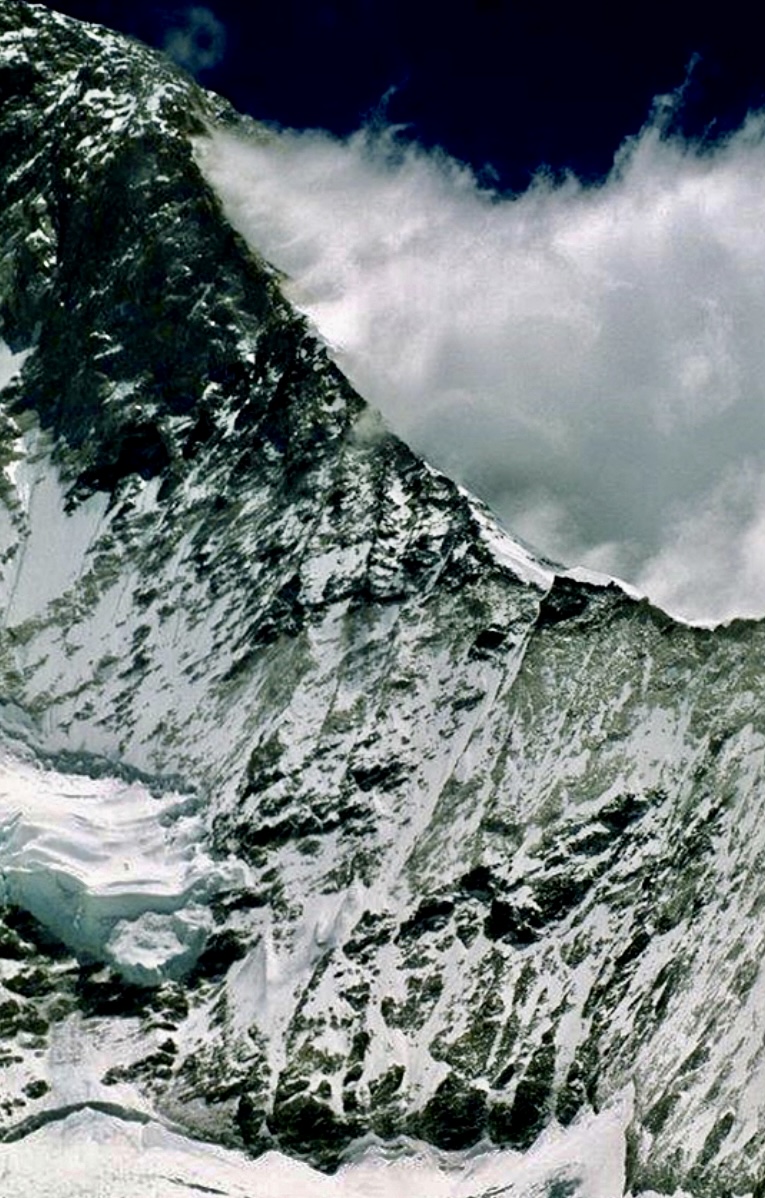
The West Pillar of Makalu. Photo: Sebastian Alvaro
Terzyul and Sieger summit
On May 17, Terzyul and Sieger departed Camp 4 at 6 am, using fixed ropes. At 7:30 pm, Iljinsky spotted them from Base Camp with a telescope: The pair was summiting Makalu as the sun set. But fog soon engulfed the peak, obscuring them from view.
The next day, Iljinsky observed Sieger descending alone to 8,300m by 9:30 am, where he sat down, exhausted. After a five-minute break from observing, Iljinsky returned and saw only a red object — Sieger’s body — among the rocks. No further movement was detected, confirming the 45-year-old American’s death.
There was no sign of Terzyul, suggesting that he and Sieger had separated post-summit, possibly due to differing descent speeds, an accident, or disorientation in the fog.
Finding Sieger
Despite snow at Base Camp on May 19, Pivtsov and Zhumayev launched a summit bid from Camp 4 at 12:10 pm, reaching the top on May 20 just before 10 am in clear conditions. During their descent, they found Sieger’s body at 8,300m, upside down among large rocks, right arm extended up, head facing down. The body was impossible to move. They returned to Camp 4 by 6 pm.
On May 20, Molgachev, Brodsky, Rychkov, and Rudakov started another attempt from Base Camp but retreated to Camp 2 in worsening weather. Molgachev and Rychkov reached Camp 4 on May 24, starting for the summit at 11:45 am, but stopped at 8,000m due to heavy snow, wind, and cold. They returned to Base Camp that day, ending the expedition.
In 2010, a Ukrainian team found Sieger’s body lower on the mountain, at 7,800m, hanging from a rope, likely shifted by natural forces. Despite extensive searches, they found no trace of Terzyul.
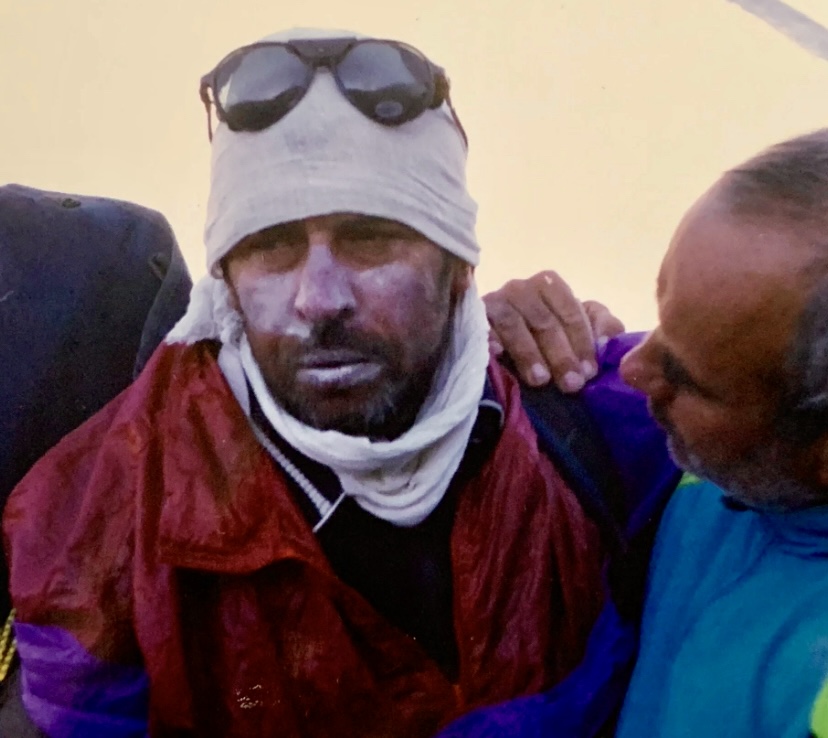
Vladislav Terzyul, after descending from the summit of Everest in 1999. Photo: Righttimestudios.com
Legacy and tributes
Terzyul died on Makalu aged 50. While his 14 peaks are disputed internationally because of the two secondary summits, Terzyul is hailed in Ukraine as the country’s first climber to complete all 14.
In 2010, the Ukraine Makalu Expedition, led by Valentin Simonenko, summited Makalu and placed a black rectangular plaque on the West Ridge in Terzyul’s memory. In 2021, a group led by Yulia Zi released a biographical documentary called Terzyul14. In 2015, Oleksiy Honcharuk, Natalia Polyakova, and Oleg Sytnyk published Vladislav Terzyul: Tie Your Knot, revealing personal details about Terzyul’s life. His daughter, Yulia, noted that the book uncovered new facets of his personality, blending his athletic achievements with his humility and strength.
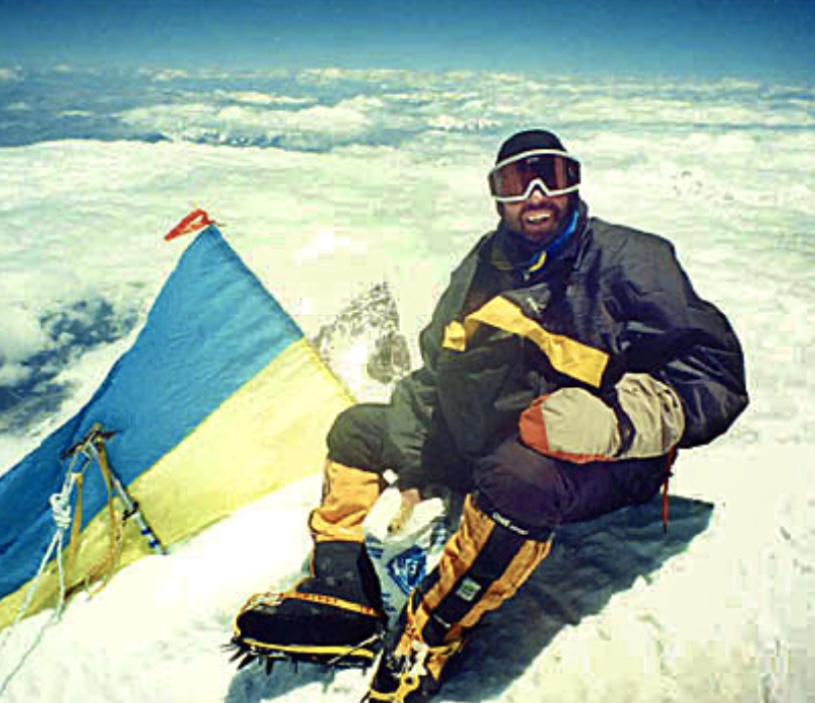
Vladislav Terzyul on the summit of Manaslu. Photo: Goat.cz
